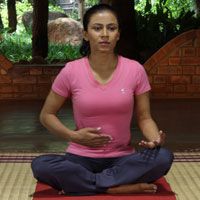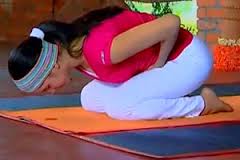With inputs from Dr. Nibin, Sri Sri Ayurveda consultant and Jai Desai, a Sri Sri Yoga corporate trainer for over a decade.
Once a foodie but now you look away from food? Ayurveda explains loss of appetite as a symptom that arises due to an imbalance in Kapha and Pitta Dosha with Kapha being higher than ideal and Pitta being lower than we would like. Poor appetite is often a result of poor lifestyle and food habits. But now you can rely on the gifts of nature that Ayurveda and Yoga are, to together help you in restoring your appetite without having to pop pills.
Ayurveda is one of the most ancient systems of natural healing known to mankind. It heals the body by balancing the three bio-energies (or Doshas) in the body. To begin, here are some Ayurveda tips to rekindle your digestive fire and re-balance doshas that actually cause loss of appetite.
1) Have buttermilk mixed with 5 gm of long pepper and rock salt each
2) Add papaya to your daily meals.
3) Drink water boiled with ginger and long pepper.
4) Another Ayurvedic formulation that can work remarkably to trigger appetite is Ashta Churna. Ashta in Sanskrit means eight. The formulation is made from 8 ingredients like Asafoetida, celery seeds, black salt, black cumin, white cumin, black pepper, long pepper and Ginger. This Churna (herbal blend) should be had with warm water or buttermilk.
5) Ayurveda also recommends having 1 teaspoon of lime juice and ginger juice mixed with little bit of cardamom and sugar.
6) Celery is the magic herb which brings back your hunger. Celery can be had with warm water.
7) A paste of nutmeg seeds mixed with honey will increase your appetite too.
Along with herbal formulations rich in appetite-enhancing properties, you can also practice a few asanas that work on the abdomen region and help rekindle pitta dosha to stimulate hunger.

www.artofliving.org
1) Kapal Bhati or Skull Shining Technique
Steps to Do it
- Keep your spine erect and sit comfortably in Sukhasana or any easy posture.
- Place your palms on the knees, facing the ceiling.
- Take a deep long breathe in and
- Exhale, while pulling in your stomach. In this step, pull your navel all the way back towards your spine. The exhalation should be forceful and voluntary.
- You can place your right hand on your abdomen to feel the contraction.
- After the forceful exhalation, the inhalation is automatic. When you relax the navel, the body breathes in automatically. You do not need to make an effort while breathing in.
- After breathing in, exhale and again pull your navel in as much as you can.
- Each round consists of 20 breaths in this manner. Practice 3 such rounds.
- While doing the practice, keep your attention on the abdomen region.
2) Agnisara
This powerful Breathing technique or Pranayam can be learned in the Sri Sri Yoga program. The technique helps kindle digestive fire and thereby improves appetite.
3) Cat and cow stretch
How to do it?
- Sit on your knees.
- Place your toes on the floor, knees on the floor, about 2 feet apart
- Place your palms on the floor, in line with your shoulders and instantly your back resembles the top of a table.
- Then as you breathe in, lift your head up, push your navel down,
- As you breathe out, bring your chin to the chest, and slowly pull your navel in.
- During this stretch, your attention should be on the stomach and abdomen region
Repeat the cycle 5 times.
4) Relax in Child pose
How to Do it?
- Bend your knees and bring them to the floor along with your ankles.
- Hips on the legs, ankles on the floor, stretch out your hands in front.
- So your arms on the floor, forehead on the floor, chest is resting on your thighs, and your hips are resting on your legs near your heels.
- Relax here in this pose for 5-7 long deep breaths
5) Mandukasana or Frog pose
- Sit in Vajrasana (kneeling on the heels)
- Make a fist and hold your knuckles into each other and
- Place them between your thighs, close to your groin,
- Make sure the fingers are facing upwards towards the ceiling.
- Then slowly breathe in and look up and
- Then slowly breathe out.
- As you breathe out, slowly squeeze your stomach in and bend forward completely.
- You will feel the tension in your abdomen and pancreas. Stay here for 5-7 long deep breaths
6) Uttan Mandukasana
- Sit in Vajrasana (kneeling on the heels)
 While in the pose, open the knees as wide as they will go so the legs are akimbo.
While in the pose, open the knees as wide as they will go so the legs are akimbo.- Both palms are on the shoulder blades, both the elbows facing the ceiling. The knuckles are in the same position as in Mandukasana.
- We keep our thumbs touching each other and both the hands on the shoulder blades, both the biceps touching the ears.
- Stay in this posture for 5-7 breaths (or as you are comfortable with)
- Continue keeping your attention on the stomach and abdomen region. You will feel the stretch throughout.
7) Surya Namaskar
Sun salutations increase the digestive fire in the body, activate the solar plexus and have tremendous other physical and spiritual benefits. While doing Surya Namaskar, keep in mind-
- During Surya Namaskar, you do not have to keep your attention on the stretches in the body. Simply take your mind towards your abdomen and stomach region.
- During any of the asana practices, you breathe in and expand the body and when you contract the body, you breathe out. Listen to your body and squeeze your stomach as much as possible.
- Every contraction during Surya Namaskar, you must breathe out effectively and squeeze your stomach in as much as possible.
- Begin with 5-7 sets of sun salutations, that is, 10-14 rounds.
8) Tadasana or palm tree pose- repeat this 5 times
9) Yoga Nidra
Having felt the stretch in the abdomen and all other parts of the body, now it is time to rest and let the body cells relax. It is very important that after doing asanas, we either finish the session with a guided meditation or Yoga Nidra (Yogic sleep). Without proper rest after the asanas, you miss out on the most important experience of Yoga which is a deep spiritual rest that your body gets, after having exhausted the Rajas Guna in the body through focused activity.
Disclaimer: The conditions and illnesses could also be due to a mix of Dosha imbalances. Please do not try to self-diagnose. This article is purely for informational purpose. We suggest you consult a Sri Sri Ayurveda physician for a thorough examination of your constitution and its balances/imbalances. It is also strongly recommended that we learn and practice these asanas under the guidance and supervision of a trained and certified Sri Sri Yoga faculty member.










